Day 1 :
Keynote Forum
Anna Bocchino
Salus Infirmorum University school of Nursing, Spain
Keynote: The Nursing Diagnosis Development of Unemployment Disorder: Content Validation With Nursing Experts
Time : 9:10-09:50

Biography:
Anna Bocchino has completed her European PhD at the age of 30 years from Naples and Seville University. She is the profesor of Gender studies and Social Sciences in the Salus Infrimorum Nursign faculty (SPAIN). She has published various papers in reputed journals such as International Journal of Nursing Knowledge. Her topics of interest are nursing diagnoses, gender studies and migration research
Abstract:
PURPOSE: This study aimed to validate the definition and define the characteristics and related factors of unemployment disorder, a proposed nursing diagnosis. METHODS: Using Fehring’s diagnostic content validity model, Spanish experts were asked to assess the adequacy of the label, defining the characteristics and other related factors. FINDINGS: The content validity index was 0.8690. A total of 16 defining characteristics reached major criteria (>0.80). CONCLUSION: The present study supports the proposed development of a nursing diagnosis for the human response to unemployment. PRACTICE IMPLICATIONS: The results suggest that the inclusion of the “unemployment disorder” diagnostic NANDA-I taxonomy would allow nursing professionals to identify the disorder and its causes and manifestations, and therefore provide the information needed for planning more relevant interventions and results.
Keynote Forum
Arne Rehnsfeldt
Western Norway University of Applied Sciences, Norway
Keynote: To build a master education based on a disciplinary perspective of clinical caring science
Time : 9:50-10:30

Biography:
Arne Rehnsfeldt is professor and leader of the master in clinical –health and caring science at Western Norway University of Applied Sciences (HVL) in Norway. His area of research is long-term caring in life-decisive boundary life events. He sees that it is very important to have a master education related to a scientific discipline as this contributes to develop the disciplinary thinking.
Abstract:
Statement of the problem: Clinical caring science as a scientific discipline is based on an internal scientific logic that binds together the “mother discipline” caring science as a systematic science, with clinical caring science as both a systematic –and applied science. A systematic science determines the ontological, -theoretical, conceptual and epistemological grounds for the science. The internal logic between caring science and clinical caring science decides the correspondence between the value-base (ethos), concepts and theories in the mother discipline, and concepts and phenomena related to clinical praxis in clinical caring science. Clinical caring science as an applied science means to apply the theory base of caring science in praxis. The theory of science thinking is that of finish scholars Katie Eriksson and Unni Lindström who say that caring science is defined by its ontology (ethos). The epistemology as a hermeneutic methodology must be in in congruence with the ethos in order to understand the essence of what in deepest sense defines caring, as for an example that suffering is a part of life and that suffering contains a health potential. Hermeneutics as the methodological ground is applied both in qualitative and quantitative research. Also a concept order is applied with ethos, -core, basic –and praxis concepts. The purpose is to describe how a master education in clinical health –and caring science is built up and permeated by the scientific discipline. Conclusion and significance: As caring is seen as the ontological ground for nursing, also other professions than nurses can participate in the master. Another rationale for this is that the master is disciplinary based and not professional based, and the discipline can be shared by many caring/nursing professions
Keynote Forum
ROGANOVIC JELENA
School of Medicine University of Rijeka, Croatia
Keynote: PARENTERAL IRON THERAPY IN CHILDREN WITH IRON DEFICIENCY ANEMIA
Time : 11:30-12:10

Biography:
Dr. Roganovic is the Full Professor of Pediatrics, School of Medicine Rijeka, and the Head of the Division of Hematology and Oncology, Department of Pediatrics, Clinical Hospital Centre Rijeka. At the national level, she contributed to the improvement of cure rate of children with cancer, and is interacting with regulatory bodies and parent groups. Dr. Roganovic is a certified member of many national and international pediatric hematological and oncological societies. She is the author of more than 300 publications, abstracts and proceedings and several book chapters. She serves as a reviewer and editorial board member for number of journals. Dr. Roganovic received several awards, including Patients' Choice Award Winner for 2011 and 2015, City of Rijeka Annual Award for outstanding contribution to the lives of children with cancer and the humanization of hospital care, and University of Rijeka Foundation Award for the contribution in biomedical and biotechnical sciences
Abstract:
Iron deficiency anemia (IDA) continues to represent a major public health problem, particularly in infants and young children. It is estimated that 40% to 50% of children under 5 years of age in developing countries are iron deficient. A common etiology of IDA is poor dietary iron intake, especially excessive consumption of cow's milk. Other causes of IDA in children are increased iron requirements during the growth period, inadequate absorption or utilization of iron, and blood loss. The treatment consists of iron supplementation along with improved nutrition. In vast majority of iron-deficient anemic children, oral administration of simple ferrous salts provides effective and inexpensive therapy. Parenteral iron preparations are infrequently indicated, mainly for children with malabsorption or poor compliance. Besides, some adverse reactions reported with intravenous iron administration have led to its limited use in children.
Hospital records were reviewed on 45 children (≤ 18 years of age) who received intravenous infusions of iron sucrose and iron gluconate at the Department of Pediatrics, Clinical Hospital Centre Rijeka, Croatia, between January 1, 2010 and December 31, 2015. Patients had a good response to parenteral iron therapy, with a median hemoglobin rise of 2.7 g/dl. There were only three mild adverse reactions. In our experience, parenteral iron is a safe and effective means to treat IDA in children who cannot receive or do not respond to oral iron due to intolerance, poor adherence, or iron malabsorption
Keynote Forum
Patricia Bishop
Brookline College, USA
Keynote: Baccalaureate Nursing Students Create a Holistic and Culturally Competent Innovative Toy or Activity to Teach a “Created†Pediatric Patient Receiving an Intervention for a Chronic Disease
Time : 10:50-11:30
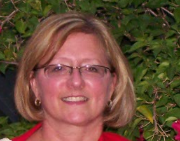
Biography:
Dr. Bishop has been a perinatal and pediatric nurse as a staff nurse, Director, or Educator for over 25 years. She joined academics 14 years ago and has been faculty at private, for profit, or public colleges, has taught across the baccalaureate curriculum on campus and online, and has been an Associate Dean of Faculty. She joined Brookline College of Nursing in Phoenix, AZ last fall as Faculty. She earned her PhD from University of Akron in 2013, and has continued to strive to create exciting classroom and clinical opportunities for her BSN students, while precepting many MSN students in nursing education.
Abstract:
OBJECTIVE: The goal was to create an assignment that promoted understanding of the challenges that pediatric patients endure when facing a procedure related to a primary diagnosis of a chronic condition witnessed today in acute pediatric clinical settings. While clinical experiences in pediatric courses are limited, this construction and simulation of an individualized case study encompasses aspects of nursing care with caring, creativity, teamwork, and application of previous courses’ knowledge. Students need to use empathy and creativity with application of previous course knowledge to create an age-appropriate teaching game or toy appropriate to their individualized patient.
METHODS: Students enrolled in the Pediatric Course, as juniors in the BSN program, are divided into groups of 4. Each group is given a “child profile” as a case study including the chronic disease, physical deficits, length of disease process, psychological concerns, psychosocial conditions, and the developmental and socioeconomic characteristics that are challenges in the holistic care of this patient and family. Of critical importance is each case study describes a diverse culture with health maintenance beliefs to be acknowledged and valued while providing individualized care of pathological conditions including sickle cell crisis, cystic fibrosis, asthma, type I diabetes, and more. The groups must use the growth and development knowledge including fine and gross motor development, pathophysiology of the disease process, and understanding of the procedure that the child will be having performed to create an appropriate toy or game to meet the educational needs of the child. The groups can individualize the case by describing coping skills used, and any other personalized characteristics to make the child and family “come alive”. The “child” must be able to physically and cognitively use the item for education, and it must be realistic for the child. As an example, an Amish child would not benefit from teaching to use a video game requiring electricity.
The presentation of their case to their classmates include the “pretend child” as a case study with name, medications, lab values, prioritized nursing diagnosis related to the interventions provided to the child during the shift when the “procedure” is to be performed. Previous completed assignments have included videos of a simulated patient interacting with the created toy/game. Creativity with the presentation is important. Included in the rubric is the method of evaluation to be used to determine if their toy/activity has been effective and met their goal for teaching.
RESULTS:
Previous completed assignments have included videos of individually created simulated patients interacting with the game/toy. Creativity, cultural competence, understanding of the disease processes, application of growth, development, psychosocial, psychological, socioeconomic, and pathophysiology of a condition impacting a pediatric patient have been strengthened and effectively evaluated in the rubric.
EVALUATION: This assignment will be evaluated with end of course evaluation qualitative comments, scores from the rubric, qualitative feedback from clinical instructors on the attention to all aspects of the pediatric patient and family rather than the disease process and interventions. Current data gathering includes components of ATI testing in categories mentioned previously.
- Nursing Education

Biography:
Jinu is a Research Fellow in the Jubilee Centre for Character and Virtues. Before joining the Jubilee centre, Jinu had been working in clinical research in Primary Care department at the University of Birmingham. She is a registered nurse and a teacher with the NMC. Her experience is in nursing, medical and nursing education and clinical research. She is currently working on the Virtuous Practice in Nursing project within the Centre taking on board insights from nursing, philosophy and social science. The aim of this project is to explore ethics and attitudes about virtues held by nursing students and practitioners, and to shed an important new light on the state of nursing ethics in the UK
Abstract:
A study focusing on the virtues in the nursing profession is timely for a number of reasons. Many scholars claim that we need to abandon the search for purely rationalist principles to guide ethical decision-making in favour of a quest to understand the virtues, especially the phronesis, judgement, or wisdom nurses need in order to make good decisions themselves (Gastmans, 1999; van Hooft, 1999; Armstrong, 2007; Sellman, 2011). Others merge virtue ethical lines of thought to an older paradigm of care ethics, maintaining that good nurses will establish caring attachments to their patients (Gastmans, 1999; van Hooft, 1999). While it is debated whether virtue ethics should replace or incorporate care ethics, virtue ethics has become the “moral theory of choice” among scholars of nursing ethics (Tschudin, 2010: 10). Virtue ethics forms a broad church, however, current scholars often disagree in their approach. Derek Sellman, for example, understands nursing along the lines of philosopher Alasdair MacIntyre as a “practice” through which virtuous nurses can achieve certain distinctive goods and advance their own well-being and the well-being of their patients (2011). Doing so, however, requires the exercise of specific virtues, including trustworthiness, open-mindedness, and especially the virtue of “professional phronesis,” or wise professional judgement. From the beginning, early leaders of the field, such as Florence Nightingale, understood nursing to be a value-laden enterprise, one requiring nurses to exercise certain virtues. Following on Florence Nightingale’s definition of nursing, Scott and Hainsworth (1950) note that nurse trainees or nurses working with Nightingale were expected to develop exemplary moral character and self-discipline. We need to explore to what extent those old ideals are still relevant in today’s nursing practice.
Aim(s) and/or research question(s)/research hypothesis(es)
Specific research questions addressed:
• Which virtues are prized and upheld by the nurses through self-reports?
•Which virtues do they associate with the ideal professional?
•What hinders or helps nurses in exhibiting virtuous practice?
•What recommendations can we give to nursing educators about improving the teaching of professional ethics in the field?
Research methodology/research design
A mixed methods approach is adopted to capture the full complexity of the issues involved. A survey has been completed by beginning undergraduates in nursing, by students just completing their initial nurse training/education, and by established practitioners who have been in practice for five years or more. The survey data is complemented by data from semi-structured interviews with a small selection of participants and educators who volunteer to take part within the survey.
Key findings and recommendations: As the study is currently in the analysis stage, key findings and recommendations will be available by July 2017
Sevim ULUPINAR
Istanbul University Florence Nightingale Nursing Faculty, Turkey
Title: Nursing Students' Participation in Social Activities and Social Emotional Learning Skills

Biography:
Sevim Ulupınar completed licence education in 1989 in Istanbul University Florence Nightingale High School and got Msc degree in 1991 and PhD degree in 1997 in Istanbul University Health Science Institute. She has a special interest in nursing education, educational skills, psychodrama. She is working in Istanbul University Florence Nightingale Nursing Faculty Nursing Eduacation Department
Abstract:
Statement of the Problem: One of the basic conditions for raising qualified and well-equipped individuals is participation in social activities that enable the student to make life more enjoyable and productive in both the family and the school environment. Social activities support the development of students' self-expression, communication, learning, research, adapt to the group, cooperation and so on social-emotional skills. Methodology & Theoretical Orientation: The aim of the study is to determine the factors that affect the participation of students in social activities and social emotional learning skills. The sample of the descriptive study consisted of 715 undergraduate students of nursing faculty. The data were collected using the Social Emotional Learning Skills Scale (SELSS) and a questionnaire to identify student characteristics, participation in social activities. SELSS is a 4 point Likert scale and consists of 4 sub-scales and 40 items (min:40- max:160 points). The cronbach-alpha reliability coefficient of the scale is .93. The data were analyzed using student–t test, OneWay ANOVA, correlation, chi-square. Findings: 87.4% of the students are female, the average age is 20.8 years. 41.7% of the students participate in social activities. The average duration of participation in social activities is 1.14 years and the average of the period of weekly social activities is 2.28 hours. Students expressed that participating in social activities; increased their socialization, self-confidence, assertiveness skills, and they have positively influenced their ability to approach with different opinions, thoughts, and tolerance. There is a significantly difference between the participation of students in social activities and age, gender (higher in women) and class (higher in senior students). There is a moderately significant positive correlation between the duration of participation in social activities and the weekly separation of social activities. The averaged of the SELSS total score is 123.85. There is a positively weak relationship between the age of the students and the subscale of SELSS's stress coping. Senior students have a higher score on stress coping subscale of SELSS. Also female students score higher on communication subscale of SELSS. Conclusion: There was a significantly difference between students' participation in social activities, the duration of their participation, the time they spent weekly, and the SELSS total score. According with these results, it can be suggested that the participation of students in social activities would be supported. Keywords: social, activity, social emotional learning, social activity, nursing student
Hülya KAYA
Istanbul University Florence Nightingale Nursing Faculty, Turkey
Title: The Relationship between Critical Thinking with Emotional Intelligence: A Longitudinal Research
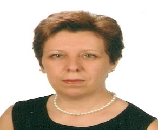
Biography:
She graduated PHD Program from Istanbul Unıversity Health Science Institue at 1998. She was working at Istanbul Unıversity Florence Nightingale Faculty of Nursing, Department of Nursing Education. Her professional interested areas are Critical Thinking and Teaching of Educators
Abstract:
Statement of the Problem: Emotional Intelligence and critical thinking are considered as important characteristic of nurses that can affect the quality of their work including clinical decision-making, evidence and knowledge use in practice. Methodology & Theoretical Orientation: The purpose of this study was to examine nursing students' critical thinking disposition and emotional intelligence throughout undergraduate nursing programme. A longitudinal design. The focus population of this study consists of 182 students studying at a faculty of nursing. Asymmetrical cluster sampling method was used to determine sample group and all the students registered in the first year were included in scope of the study. Information Form, California Critical Thinking Disposition Scale (CCTDS) and Emotional Intelligence Assessment Scale were used for data collection. CCTDS is a 6 point Likert scale and consists of 6 sub-scales and 51 items (min:60- max:360 points). The cronbach-alpha reliability coefficient of the scale is .85. Emotional Intelligence Assessment Scale is a 6 point Likert scale and consists of 5 sub-scales and 30 item. The cronbach-alpha reliability coefficient of the scale is .91. The data were analyzed using freguency, standart deviation, pearson correlation, Kruskal-Wallis test. Findings: In this study was found that there was a significant increase in the students' grade point of critical thinking scores in the final year compared to the year they started nursing education (p<0.05). In this study was found that there was a no significant increase in the students' grade point of emotional intelligence scores in the final year compared to the year they started nursing education (p>0.05). There was no relationship between critical thinking tendencies in the year students started their nursing education and the tendency of critical thinking in the last year. There was no correlation between the year students begin their nursing education, emotional intelligence, awareness of their emotions, managing their emotions, empathy, social skills, and final class critical thinking tendencies. The relationship between the dimension of motivation of emotional intelligence when students started to nursing education and the critical thinking trends in the final year, was found to be very weak at positive level (r=.181 p=.014). Conclusion: It is necessary to give more importance to the development of emotional intelligence in nursing students. It is recommended that nursing scholarship explore and debate the criticisms and design issues currently leveled at emotional intelligence and critical thinking researches outside nursing. Keywords: critical thinking, critical thinking dispotision, emotional intelligence, nursing students, nursing education
Nil Küçük YÜCEYURT
Istanbul University Florence Nightingale Nursing Faculty, Turkey
Title: VALUE- BASED NURSING EDUCATION
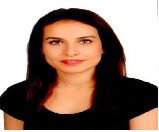
Biography:
Nil K. YÜCEYURT had worked in the child infection clinic of Mersin University Medical Faculty Hospital in the years of 2012-2014. She has been working as a research assistant in the Istanbul University Florence Nightingale Nursing Faculty, Departman of Nursing Education. She graduated from the Psychiatry Nursing Master Programme of Mersin University in January 2016. As well as she continue her phd studies at the Istanbul University
Abstract:
Statement of the Problem: Nursing aims to help individuals, families and society, with find solutions to health problems; and give them quality of life. Nurses provide qualified services by respecting the life, honor, individuality and integrity, values ​​and decisions of the person whom he regards as the most valuable asset. The training of the nurses who can serve the mentioned quality is possible with the education based on the values.
Nursing education is the whole of efforts to create good people, good life, good professional members and a healthy society. For this reason, it is important that nursing education has to structured to reach the cognitive, emotional and psychomotor skills aimed at giving universal values ​​to the students. Students' awareness of certain values, production of new values, adoption and internalization of behaviors and exhibitions should be the primary responsibility of nursing education. In the literature; it is emphasized that the education programs based on universal values ​​increase the democratic values ​​of the individual, increase self-esteem and self-esteem significantly but the issue of how to do this is not addressed. For this reason, answers to ‘What values ​​should education bring?’ and ‘What values, how should they be taught?’ questions in education programs should be sought.
Methodology: Literature review by searching primary documents of original researches on international database, making a critical and thorough evaluation of such documents.
Conclusion: When nursing education programs are examined, it is noteworthy that the values ​​are placed in the contents of the courses and there is no standardized structure. It should be kept in mind that today's changing student profiles and learning styles will also affect the ways in which education is based on valued. In this review, the importance of value-based nursing education will be emphasized and suggestions will be presented according to today's changing conditions.
Karen McCutcheon
Queen’s University Belfast, Northern Ireland
Title: Traditional teaching methods in higher education
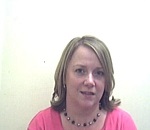
Biography:
Dr Karen McCutcheon is a Senior Lecturer (Education) in the field of Adult nursing and is the academic lead for practice at Queen’s University Belfast. Karen is widely regarded as a lead nurse in the area of ophthalmic and perioperative care and is the editor of the Journal of Perioperative Practice and is a clinical section editor for the British Medical Journal. She has recently completed a doctorate in Nursing Practice and her main area of research interest is the use of innovative technology in nurse education
Abstract:
Statement of the problem: Traditional teaching methods in higher education have achieved much success and have a proven track record of graduate attainment. Contemporary online and blended learning teaching methods have less supporting evidence of success due to their emergent state of development. Increased pressure is being placed on nurse educators by HEI policy-makers and curriculum developers to introduce full online learning into nurse education. This decision to introduce online or blended learning has sometimes been driven by economics and logistics; instead the decision to implement should be a more balanced approach with consideration given to the strength and limitation of each teaching modality. Therefore, consideration needs to be given to how best to support educators and students to engage with online and blended learning techniques. The aim of this paper is to explore the evidence available for clinical skills teaching in undergraduate nursing and determine whether online or blended learning approaches are effective in this aspect of nurse education. Methodology: Mixed methods systematic literature review. Findings: Nineteen papers were identified and the synthesis of findings focused on four areas: performance, knowledge, self-efficacy and user satisfaction. Conclusion: The results of this review suggest that online learning for teaching clinical skills is no less effective than traditional face to face teaching. This presents an opportunity for nurse educators to be creative and develop a variety of teaching modalities that can effectively deliver high quality learning for nursing students.

Biography:
Dr. Hooven’s academic history includes graduating from West Chester University with her Bachelors in Nursing (BSN), graduating with her Masters in Business Administration (MBA) with a focus in finance, and her Masters in Nursing (MSN) with a focus on nursing administration. Dr. Hooven graduated from Villanova University with her PhD with a focus on nursing education. Her dissertation included tool development on collaboration in the clinical learning environment, along with a mixed methods national survey on clinical education. Dr. Hooven has been a nurse for over 10 years and has worked in critical care, operating room, endoscopy, and short procedure with pediatrics patients to adult patients. Dr. Hooven is currently at TCNJ and has received $450,000 as a Project Director for the Robert Wood Johnson Foundation on her work with population health. She has also been a co-investigator for a $100,000 grant from Novo-Nordisk focusing on obesity in schools
Abstract:
The overall goal of the Population Health program is to improve health and wellness in patient populations. This is achieved by understanding health outcomes and the determinants that impact these outcomes. Nurses are considered the largest body of healthcare providers in the United States which gives them a great advantage to be involved with patient care decision making. Through a grant from the Robert Wood Johnson Foundation, the New Jersey state college was able to enhance the population health content throughout the nursing curriculum.
The initiative had three major components. These were (1) Faculty Development, (2) Content and Learning Object Development/Implementation, and (3) Laboratory (Simulation) and Clinical Experience Development and Implementation. The school of nursing moved forward on these major components simultaneously.
Faculty Development included imparting knowledge and skills upon core faculty for developing population health content and learning objects, conducting train-the-trainer style workshops with core faculty, led by a recognized leader in public health, population health, and curriculum development. Core faculty attended national meetings on population health and brought the knowledge back to the department by leading faculty development meetings with their colleagues on population health content development. The second part of implementation includes content and learning object development/implementation. The core faculty evaluated their specific courses and content to revise content to include population health competencies. The school established faculty course work groups and included the interprofessional practice partners on curriculum revision. The school of nursing developed two additional courses that are now offered as electives for the nursing students. Topics in Nursing: Nursing and Global Health and Health Informatics. The third theme focused on Laboratory (Simulation) and Clinical Experience Development and Implementation. The community clinical experience was enriched with health promotion activities. Nursing students and had to research existing data on the communities and populations of interest at partner clinical sites, develop a list of community assets and resources available to the populations of interest, design health programs to meet identified needs, determine the data to be collected from each participant, conduct population health screening and health education events based in needs assessment, create a de-identified database for the population of interest, evaluate findings and disseminate findings to their class and the agency of interest
M. Kathleen Murphy
University of Texas Medical Branch, USA
Title: Nursing Leadership: Developing Master’s Prepared Transformational Leaders through Distance Education Technology and On-Site Coaching

Biography:
Dr. Murphy is a board certified nurse executive-advanced, with extensive background in family, school, and public/community health issues, particularly among underserved populations. She has served the community in a variety of nursing leadership roles and has worked internationally implementing leadership and management strategies in rural health posts. In the Executive Nurse Leader program, she focuses on facilitating the professional development of nurse leaders with innovative didactic and experiential learning, mentorship, self-awareness, self-efficacy and communication strategies. Dr. Murphy has many community interests. She serves on the Board of Directors for Prevent Blindness, and Prevent Blindness Texas; chairs the Prevent Blindness Public Health Committee, and is immediate past chair of the National Center for Children’s Vision and Eye Health Advisory Committee. She is an alumna of the prestigious Robert Wood Johnson Executive Nurse Fellowship (2004-2007), holds the Alice Ostermayer Stubblefield Professorship in Nursing, and is a Fellow in the American Academy of Nursing
Abstract:
Program Aim: The MSN Executive Nurse Leader program at the author’s institution prepares 21st century nurse leaders to influence and advance health locally, nationally and globally. Executive Nurse Leader (ENL) graduates are positioned to lead change and advance health through collaboration, innovation and dissemination of new approaches to healthcare that improve individual and population health. The ENL program is based on research delineating the key competencies of successful, transformational leaders.
Program Methodology: Leadership competencies are integrated into didactic content delivered though an asynchronous on-line platform augmented with synchronous learning opportunities and opportunity for reflection. Didactic content is paired with a 3 semester leadership practicum where the student is mentored while leading a major change project. During each practicum semester, faculty conduct on-site visits with the student and the mentor to assess leadership development, provide coaching and identify leadership opportunities for the student. These are intensive visits and often last 2-3 hours. Technology is also used for site visits, and the faculty visit may be in person or via iPad/Face Time™. The combination of distance education and on-site practicums increases the capacity of a leadership development program to reach more students and develop them as leaders.
Findings: Consistently high student satisfaction ratings for program content and implementation and enhanced sense of self-efficacy as a leader.
Conclusions and implications: Transformational leaders are a critical component of developing and nurturing healthcare knowledge workers in a rapidly changing healthcare environment. Assuring a sufficient and competent leadership workforce is possible through combining distance education with intensive practicum and coaching experiences. This model is scalable and replicable and will help to ensure that nursing leaders are positioned to influence and lead
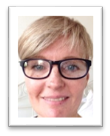
Biography:
Beth Wilson started her career in tertiary education in the learning and teaching department of a renowned University. Her focus has been on student learning and experience and how this can be measured and enhanced. A previous Action Research project on MEQs led to a change in the questions included to focus on the impact of the learning on practice. Her current focus is on feedback as a method of learning and development. She is currently undertaking a project on a revised academic feedback form subsequent to the above research
Abstract:
Scores from the United Kingdom National Student Survey consistently rank feedback as one of the lowest in terms of student satisfaction. In view of the fact that feedback is seen as one of the most important aspects of learning, it is important to explore the reasons for this and to try to remedy it. The purpose of this study is to ascertain the perceptions of students with respect to feedback. This qualitative study adopted a social reconstructionist philosophy and utilised a case study approach to study a particular phenomenon. The sampling technique utilised was purposive in that it selected from a pool of third year children’s nurses but eight participants were selected randomly from the volunteer group of twenty four to minimise bias. Data was collected in the form of a focus group which was audio taped and transcribed verbatim. The transcript was returned for participant validation to increase rigour. Thematic analysis was conducted utilising a framework developed by Spencer et al.,(2014 in Ritchie, 2014 pp.271) and patterns were organised into clusters of meaning. An independent colleague was utilised to identify themes to reduce bias of the study lead who was immersed in the enquiry
Results
Preliminary data demonstrates correlation with the literature review in that students’ expectations are mistmatched with the feedback they receive. Data found that students want their feedback to be constructive and specific in identifying areas for future improvement. There appears to be a need for a further study to redevelop the manner in which feedback is given and the content. A framework may assist academics in providing the desired feedback. A proposal for a Participatory Action Research study will be explored. It is hoped that this will improve student experience of feedback and lead to a congruent improvement in the NSS scores.
Josée Bonneau
Ingram Schhol of Nursing, McGill University, Canada
Title: Developing Ethical Fitness in nursing students

Biography:
Josée Bonneau completed her undergraduate and graduate studies in Nursing at the University of Montreal and has obtained a graduate certificate in Bioethics from the Faculty of Medicine of this same university. Prior to taking on a full-time position at McGill in August 2014, she worked at the Ordre des Infirmières et Infirmiers du Québec (OIIQ) in the Surveillance Office for Nursing Practice where she actively contributed to the development of nursing competencies and evidence based practice guidelines. She has also developed an expertise in Community Health, Bioethics and Nursing Education.
She has taught Biology, Chronic Illness, Leadership, Community Health and Nursing Ethics at the Faculty of Nursing of the University of Montreal and is currently involved in the research and development of Ethical Competencies in Undergraduate Nursing Programs. She is also an Ethics Fellow at the Centre for Applied Ethics, MUHC
Abstract:
There is an inherent moral dimension that pervades all of nursing practice: That being said the development of this competency is very inconsistent across nursing education. Strategies that foster the development of ethical reasoning in nursing students are still to this day anchored in traditional teaching methods such as theoretical theories and case study learning. As nursing strives to maximize good (comfort, dignity, quality of life) and minimize bad (pain, suffering) in health and illness. It is important to emphasize that patients of nursing care are vulnerable and that every nursing interaction carries a potential for help and a potential for hurt. In everyday practice, nurses engage, interpret, shape, and respond to the moral experience of patients and families in their care. Wright & Brajtman (2011). How can educators foster the development of ethical competencies in nursing students? Developing ethical fitness in an innovative way can foster the interest, participation and engagement of nursing students and it can also create favourable conditions for the development of ethical reasoning. Kidder argues that ‘’Ethical fitness needs to be developed and maintained. It requires being mentally engaged, thinking, reasoning, grappling with difficult situations or their potential, on a regular basis, as well as a commitment to finding better ways to reach good outcomes’’ Kidder (2009). Being ethically fit is about how one prepares to make good choices and take actions that benefit others’’… Nurses are urged to become vigilant about proactively raising questions of value in their everyday nursing practice’’. Storch et al. (2009). Taking the time to reflect on personal and professional values and beliefs, knowing ones strengths, being aware of the code of Ethics of his/her profession, understanding how the context of health care and nursing influence moral distress, identifying strategies that develop ethical fitness and promoting interventions that are in the best interest of the client are just a few ways that nursing students can develop ethical competencies. The purpose of this workshop is to further discuss and explore innovative pedagogical strategies that foster the development on ethical competencies in nursing students
Toni Azzopardi
Western Sydney University, Sydney Australia
Title: Experiences of Undergraduate nursing students with disability on clinical placement with their reasonable adjustments in place: A qualitative research study

Biography:
Registered Nurse (RN), PostgradDipNursEd, and Masters of Philosophy student. In my role as a lecturer I contributed my expertise to the Inherent Requirements of Nursing Education (IRONE) project commencing in 2010. I have also presented an aspect of the project at an international conference and awarded Best Abstract in 2011, converting this presentation to a publication in (Feb, 2014). Along with the other team members I was awarded a UWS Citation for Outstanding Contributions to Student Learning (IRONE project – team award) in 2012. In 2013, I commenced my Higher Research degree on an aspect of IR work
Abstract:
Access to tertiary education for people with disabilities has become increasingly important in recent decades as the international community recognises the social and economic benefits that continuing education offers as a pathway to employment and society participation (Grigal & Hart, 2010; O’Connor, Kubiak, Espiner & O’Brien, 2012). Within the literature there is also a prominent focus on disability policy and the education institutions ensuring the facilitation of inclusive and effective teaching strategies to support students with disabilities (Bleich, Faan, McWilliams & Schmidt, 2015; Madriaga, Hanson, Heaton, Kay, Newitt & Walker, 2010; Mortmore, 2012;Shpigelman, Zlotnick & Brand, 2016).
A qualitative exploratory research study was conducted to understand and explore what is meant to be a student with disability requiring a reasonable adjustment/s for an undergraduate nursing clinical placement. The study was conducted at the School of Nursing and Midwifery of an Australian university. Six participants were recruited and semi-structured interviews were selected as the data collection strategy. All data was thematically analysed using the six phases outlined by Braun & Clarke (2006). This paper presents the themes resulting from the data analysis: Feeling targeted and unsupported: an emotional journey; Experiencing adjustments and accommodations on clinical; Challenging stereotypes and pushing boundaries; and Empowering strategies. The implications drawn from the findings will have a wide ranging impact on clinical education, clinical practice and further research
Özgü BAKÇEK
Gulhane Nursing School Ankara, Turkey
Title: A New Method In Lecturing For Nurse Educators Pecha-Kucha: A Case-Control Study
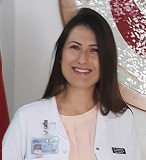
Biography:
She graduated in 2011 from the Gulhane Military Medical Academy(GMMA), School of Nursing . She was entitled to participate in the Master's Program GMMA Surgıcal Nursıng Department in 2015. She is currently continuing her master education in University of Health Sciences Surgıcal Nursıng Department
Abstract:
Pecha-Kucha (P-K), takes about 20 seconds per slide, is a form of a 20-slide presentation. Mostly architects and people interested in visual arts use this technique in explaining and demonstrating the products they revealed. In this study, it was aimed to compare the effects of P-K and classic power point techniques on learning status of nursing students in lecture. This casecontrol study was held in nursing school in Turkey in March 2016. The participants of this study were 134 firstyear students of the nursing school (P-K group, n= 66; control group, n=68). Descriptive statistics and MannWhitney U test were used in analysis. Students in both groups have responded to 15 questions to evaluate their learning status at the end of the course. It can be taken 15 points maximum from these evaluation questions that received one point for each correct answer. Both groups again reported their satisfaction levels over 10 points in visual analog scale at the end of the course. In addition to this, feedback of P-K group students regarding this presentation technique were taken. While average score of lesson evaluation in control group was 13.67 ± 0.09, it was 13.33±1.30 in P-K group. There is no significant difference when comparing learning status of students in both groups (p<0.05). When groups were compared in terms of satisfaction levels, it was found that P-K group average satisfaction level is higher than control group (control group; 8:20 ± 1.09, P-K group; 9.12 ± 0.96). In accordance with this result there is a statistically significant difference between students’ satisfaction levels (p <0.01). P-K is increased the lesson satisfaction of students through visual and narrative expressions. Students in P-K group were given positive feedback related to this technique. It can be used as an alternative to classic power point technique by nurse educators in the lecture
Steve Smith
Robert Gordon University, UK
Title: A hermeneutic exploration of how mental health nurses use solution focused brief therapy in clinical practice

Biography:
Dr Steve Smith is a Senior Lecturer (Enterprise Fellow) in Mental Health and Wellbeing. He completed his PhD as a part-time student in 2015. His research focuses on the impact of training in Solution Focused Brief Therapy on the professional and cultural identity of nurses. His interests include the relationships within Communication, Language and Thinking, Philosophical Hermeneutics, the role of the mental health worker in primary and secondary care, and mindfulness based health and wellbeing
Abstract:
Aim: The aim of this presentation is to report on the outcome of a study into the experience of nurses who had undertaken training in solution focused brief therapy (SFBT).
Background: SFBT was developed in the 1980’s by a team of family therapists in Milwaukee, Wisconsin, USA. Since then it has developed into an approach utilised in a wide range of situations including mental health care, education, organisational development, coaching, and justice services. This presentation explores the impact of training experienced mental health nurses to utilise SFBT interactions and focuses on the unique experience of participants in relation to their mode of practice.
Design: The study employed a hermeneutic design, drawing on the work of Hans-Georg Gadamer, within a narrative framework. Individual interviews were transcribed and texts explored thematically and through the nursing metaparadigm of Jaqueline Fawcett, and compared with a metaparadigm of SF practice.
Results: Through a prolonged immersion in the texts, a hermeneutic understanding of how the nurses utilised SFBT was arrived at. This was framed around the four concepts of Human Being, Environment, Health and Nursing and the manner in which solution focused practice informed the nurses’ engagement with these concepts.
Discussion: The outcomes suggest that the experience of nurses who have undertaken training in SFBT is related to the paradigm of nursing which informs their practice. Where the nursing paradigm is of the ‘assessment and delivery of care needs’ modality, SFBT training has little to offer the nurse; however, where the nursing paradigm reflects an ‘interpersonal, dynamic’ modality based on shared relationships, training in SFBT can be a transformative experience for the nurse.
Conclusion: This study offers an original contribution to our understanding of how mental health nurses interact with their patients, and how mental health nurses can be empowered to work collaboratively with service users
Kari Ingstad
Nord University, Faculty of health Sciences, Norway
Title: Less job stress with 12-hour shifts

Biography:
Kari Ingstad has completed her PhD at the age of 38 years from Norwegian University of Science and Technology (NTNU), and postdoctoral studies from Nord University. She is director of Research in the Faculty of health Sciences, Nord University. She has published more than 20 journal papers, book chapters, and conference papers. She has edited one book on Gender, Work and Employment
Abstract:
Abstract
Extended work shifts of 12 hours or more have become a common scheduling strategy for nurses in several countries, though this is not the case in Norway. There, many managers, nurses, and union representatives have expressed concerns about whether nurses can function effectively while working long shifts. This study thus aimed to examine how long shifts influence nursing outcomes such as stress, continuity, and responsibility in Norwegian nursing homes. Data were collected during indepth interviews with 16 nurses employed at four different nursing homes who have worked 12–14-hour shifts. Results suggest that long shifts actually reduce stress and increase both work continuity and accountability, though these positive impacts of long shifts occur primarily when all departmental staff work long shifts. Furthermore, fewer shift changes mean more time spent with patients and better communication
Shankari Ravichandran
Columbia University Medical Center, USA
Title: Expressive Aphasia in Lung Transplant Recipient

Biography:
Shankari N.Ravichandran is a Senior Transplant Nurse Practitioner in the Lung Transplant Program at Columbia University Medical Center in New York. As a senior member of the Transplant team at Columbia, Mrs. Ravichandran supports the program with her wide cardiothoracic and administrative expertise to be recognized as a Blue Ribbon Center of Excellence Nationally. She has established an Electronic Medical Record template for the optimization of care for the outpatient post-transplant patients, along with a clinical education and comprehensive clinical support base for clinical transplant nurse mentorship program in New York. She is a medical advisor and board member of a grass root patient supported philanthropy, “The Lung Transplant Project” which supports on-going research for immune tolerance at Columbia University immunogenetic laboratory. She received her Masters degree in Nursing with an ANCC credentialed Family Nurse Practitioner from Pace University in New York. Currently she is in the process of completing her doctorate degree in clinical practice at Columbia University School of Nursing, where she is an associate professor for clinical nursing.
Abstract:
Progressive multifocal leukoencephalopathy (PML) is associated with John Cunningham polyomavirus (JCV) infection of central nervous system oligodendrocytes, resulting in demyelination and progressive focal neurologic deficits. In the setting of immunosuppression, reactivation of dormant JCV has been noted in patients with Human Immunodeficiency Virus (HIV) (Fong & Toma, 1995). I would like to present a case history of a post single lung transplant recipient, 66-years of age, female, cytomegalovirus seropositive, Epstein-Barr virus(EBV) seropositive, Chronic Obstructive Pulmonary Disease (COPD) patient, who presented with symptoms of aphasia associated with word-finding difficulties and swaying to one side when walking lasting one week, which progressively worsened. A diagnosis of PML was established via brain biopsy and correlating brain images. This case outlines the difficulty of balancing immunosuppression for post lung transplant patient, in the setting of an established diagnosis of PML. The patient died as PML symptoms progressed in the setting of decreased immunosuppression from respiratory failure secondary to acute rejection
Mary Brigid Martin
Keiser University, USA
Title: Transcultural nursing in today’s global environment

Biography:
Mary Brigid Martin PhD, ARNP, CTN-A, holds a PhD from the Christine E. Lynn College of Nursing in Boca Raton, Florida. She is certified in Transcultural Nursing by the Transcultural Nursing Society and in Nursing Professional Development by the American Credentialing Center. Her experience includes acute patient care, teaching, and nursing staff development/clinical education leadership in the US and the Middle East. She also holds registration as a Family Nurse Practitioner/Advanced Registered Practice Nurse by which she offers volunteer primary care services at a local clinic. Scholarly interests include health disparity, global health, and the influences of socio-cultural and socio-political dynamics on health. Her doctoral research explored anti-Muslim discrimination in health care in the U.S.; she has several publications related to transcultural nursing. Mary is currently a faculty member of Keiser University's Graduate Nursing Program in Fort Lauderdale, Florida, USA
Abstract:
The call for professional nursing to address the human condition has existed for more than two centuries. Transcultural nurses have concentrated on this call since the inception of the discipline of transcultural nursing over 40 years ago. Advances in science, technology, and social media are impacting individuals and society. The fallout of international conflicts within geopolitical communities, increasing migration, and global socio-political and socio-economic dynamics is presented in clinical and community care. Such concerns challenge nurse educators on how best to prepare future nurses to function effectively in today’s health care environment. These life world phenomena pose opportunities in nursing education to examine or develop new paradigms. A re-examination of Leininger's paradigm of Culture Care Diversity and Universality: A Worldwide Theory of Nursing is in order. Leininger's world view, not only addresses patient-centered culturally congruent care, but also the interface of cultural and social structural dimensions, namely cultural values, beliefs and lifeways, kinship and social factors, religious and philosophical, educational, economic, environmental, technological, political and legal factors within environmental, linguistic and ethnohistorical contexts. The purpose of this presentation is to discuss how transcultural nursing education is inherent in understanding global health, discuss the significance of the United Nations Sustainable Development Goals in transcultural nursing, and re-examine the local and global cultural and social structural dimensions of Leininger’s Sunrise Enabler.
- Nursing Education
Location: Prague, Czech republic
Session Introduction
Emine ÅžENYUVA
Istanbul University Florence Nightingale, Turkey
Title: A Valid and Reliable Tool for Assessment of Patient Education: Nurses' Patient Education Role Assessment Scale

Biography:
Emine Şenyuva completed her PhD Edıcation in 2000 at The Health Science Institute of Istanbul University. She is lecturer at Istanbul University Florence Nightingale Nursing Faculty, Department of Nursing Education. Her professional interested areas are distance education programs, web based education for nurses and patients
Abstract:
Statement of the Problem: In last years changes and developments in the health care system have increased the importance of nurses' role in patient education. However, in the literature, there were no valid, reliable assessment tools to evaluate the nurses' role in patient education. The aim of this study was to develop a valid and reliable instrument that will enable to assess the nurse behaviors during the patient education processes.
Methodology & Theoretical Orientation: This methodological study was performed from June 2016 to February 2017 at 2 university hospitals, 2 private hospitals and 2 education and research hospitals in Istanbul, Turkey. 583 of 2915 nurses working in these hospitals, agreed to participate to the study. All of them stated that they give formal and informal patients education.
The scale items were developed by researchers depending on literature and expert opinions. The hospitals and Ethics committee official permissions and informed consent by participants were obtained prior the study. The IBM SPSS 21.00 program was used for data analyses. Descriptive statistics (number, percentage, mean and standard deviation) and psychometric analyzes (item analysis, confirmatory factor analysis, internal consistency coefficient) were done. Statistical significance level was accepted as p<0.05 for analyzes.
Findings: Most of the nurses have a bachelor's degree. The mean age of the nurses was 32.77 ± 7.71 years. 59,0% of them are working in the Internal units, 41,0% are working in surgical units and the average working year was 11,23 ± 8,48 years. 75.0% of them were clinical nurse and only 0.5% of the nurses are working as a patient education nurse.
The Kaiser-Meyer-Olkin (KMO) value for Nurses’ Patient Education Role Assessment Scale’s was 0.96. The 42-item draft scale represents 63,37% of the total variance. 4 factors as (1) Identifying Teaching Needs, (2) Diagnosis and Planning, (3) Implementation, (4) Evaluation and Documentation with factor loadings above 0.45 were separated. The Cronbach-alpha reliability coefficients were between 0.78-.95 for the subscales and 0.97 for scale.
Conclusion: It was determined that the Nurses’ Patient Education Role Assessment Scale’s is a valid and reliable tool to evaluate whether nurses apply patient education in accordance with patient education process.
Keywords: patient education, patient education in process, educational role of nurse, nurse
Siobhan Tranter
Nelson Marlborough Institute of Technology (NMIT), New Zealand
Title: Initiatives aimed at retaining ethnically diverse student nurses on undergraduate programmes: an integrative review

Biography:
I am currently a lecturer at Nelson Marlborough Institute of Technology (NMIT), Nelson, New Zealand. I have been in post for 3 years. Prior to this I was a lecturer and Research assistant in Bangor University, Wales for 11 years.
I teach on the undergraduate programme we offer at NMIT where my specialty areas are research, professional responsibilities, contemporary issues and preceptorship. I also help coordinate year 1 of our Bachelor of Nursing programme.
My research interest are varied. I have been involved with research and published papers in the field of physical health of people with serious mental illness, research methodologies and teaching practices and ethnic and indigenous populations.
Abstract:
This paper presents an integrative review of the literature focusing on the reasons ethnically diverse undergraduate student nurses leave the profession before graduating.
There is a well-documented concern about the global chronic shortage of nurses. In 2016, the Centre for Workforce Intelligence predicted the NHS in the UK is likely to have 24,500 fewer nurses than it needs. Similar predictions have emerged from the US with the American Association of Colleges of Nursing (AACN) reporting that nursing school enrolment is not growing fast enough to meet demand.
Coupled with this, is the strive towards creating a linguistically and culturally diverse workforce that can provide more culturally appropriate health care. Whether this is in response to addressing the disparities of health in indigenous populations (Maori and Aboriginal) or acknowledgment of growing migrant populations within existing communities (Hispanic populations in the US). Thus we interrogated the evidence to establish the success of initiatives focused on retention of ethnically diverse nursing students.
Databases were searched using key terms to identify papers that were both relevant and rigorous. The CASP (CASP 2009) tool was used to critically evaluate the relevant literature. The appraisal process yielded 17 papers that were included in the review.
The four main themes that emerged from the review were: 1. prediction, 2. recruitment and retention, 3. multifaceted approaches once on the programme, 4. single facet approach once on the programme.
The studies reviewed used a wide variety of incentives and methodologies. Although there are some positive outcomes from several of the initiatives it seems the issues of retention for this group of student nurses are complex and multifaceted. Given the global nature of this issue it would seem more robust, large scale research is required to further investigate the initiatives.

Biography:
Patama Vajamun a SUT faculty who specialize on community health nursing;community-based care, and long term care
Abstract:
Stroke is a leading cause of long-term disability and the fifth cause of death in Thailand2. The important factors induce stroke are smoking, lack of physical activity, alcohol consumption, poor diet intake, emotion, high cholesterol, blood pressure, age, obesity and uncontrol glucose or hypertension that contribute to stroke.(AHA,,2017). Objective: To describe stroke risk levels and the results of proactive community –based care to promotion of stroke prevention in Nonglak subdistrict Chumpong district Nakhon Ratchasima, Thailand. Quasi-Experimental community-based was conducted from 1/9/2017 to 2/16/2017. There were 51 participants whose age of 35 and over who live in Nonglak village Nonglak subdistrict Chumpong Nakhon Ratchasima,Thailand,.. SUT-SRAS was developed by the fourth year nursing student under supervision of Assistant professor doctor Naruemol Sing-Dong and it’s reliability was 0.80. Intervention; SUT-SRAS was used for assessment of stroke risk, planning, implementation; focus on group and individual specific risk factors through health education, home health care, training caregivers, village health volunteer and community leader for exercises, advice ,counseling including demonstration, coordination, referred and providing supportive system finally, evaluation. Data was annualized by descriptive; percent, mean, SD, and compared SUT-SRAS risk factors pre and post intervention by paired t-test. There were 17 male, 34 female, mean of age was 65 (36-98). Most of them educated in Primary school 44(86.27%) , most of them are farmers and employee 23(25.10%). SUT-SRAS risk in level 1,2 and 3 were 46(90.20%), 4(7.84%) and1(1.94%) respectively. After intervention all of people in level 2 were decrease risk factors and a man in level 3 was referred for treatment including improved health behaviors. While 95% of them had decreased their risk factors and significantly decrease of cigarettes smoking (p<0.05).
SUT-SRAS tool was useful for assessment to provided proactive community-based care to prevent stroke by decrease poor health behaviors. Non of them developed stroke. Further evidence-based approaches to changing behaviors by community-based care as a proactive prevention activities for the risk groups and individuals are required to achieve the goals of decrease incidence and prevalence rate of stroke
Emel GÃœLNAR
Kırıkkale University, Turkey
Title: The effect of Palliative Care Lesson towards the Students’ Attitudes of Death
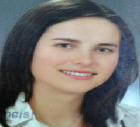
Biography:
Emel Gülnar has expertise in fundamentals of nursing. Her field of study is parenteral drug management,urinary incontinence, palliative care. She participated in various symposiums, courses and congresses inrelated fields. She worked as a clinical nurse in a hospital for 6 years and works as a research assistant inan educational institution for 3 years. She is also PhD student and writing thesis
Abstract:
Introduction
Nurses have significant roles in the services given to the patients and families in palliative care. To build up a qualitifed nursing care for the palliative care patients, the lessons about palliative care should be integrated into the core of nursing education.
Aim
This research was conducted to explore the effects of palliative care lessons towards students’ attitudes of death.
Method
The scope of this descriptive study was consist of 50, 4th grade bachelory nursing students. Due to the availability of the whole scope, all the students were included into the sample. The datas were collected via demografic characteristics questionnaire and Death Attitude profileRevised/DAP-R. Death Attitıde profile-Revised (DAP-R) was developed by Wong T.P. and collegues (1994). The turkish version of the form was studied by Çevik (2010). The survey instrument used in this study was DAP-R. Results The 88% of the students were female, 66% were willing to provide care to the patients who are about to die, 34% met a death case and 90% aggreed with the idea of the patients who was about to die should be informed about their prognose. The mean score of the DAP-R was 4,29±0,47. The subdimensions were as in following: fear of death was 3,92±0,94, death avoidance was 3,29±1,02, neutral acceptance was 5,44±0,66, approach acceptance was 4,86±0,71 and escape acceptance was 3,55±1,13. The relationship between the experience of the students about meeting death or to serve to the patients about to die and the mean score of the death avoidance which is one of the subdimension were found statistically significant. (p<0.05).
Conclusion
The analysis confirmed that Palliative care lecture effects the students’ attitude towrads death. According to these results, to integrated palliative care lessons to the core of nursing education should be offered
Kamile KIRCA
Kırıkkale University,Turkey
Title: NURSING APPROACH BASED ON INTERPERSONAL RELATIONS THEORY OF H.E.PEPLAU IN PATIENTS SCHEDULED FOR MASTECTOMY DUE TO BREAST CANCER
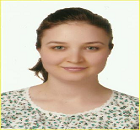
Biography:
Kamile Kırca has expertise in the field of internal medicine nursing. Her working areas are medical oncology, radiation oncology, palliative care and geriatrics. She participated in various symposiums, courses and congresses on related fields. She worked as an oncology nurse for four years and she has been working as a research assistant at an educational institution for one year. She is also writing her dissertation as a doctoral student. She has taken courses on oncology nursing, rehabilitation nursing, intensive care nursing and nursing models
Abstract:
Peplau developed a useful nursing model useful in various contexts of nursing, in which the nurse has a therapeutic relationship with the patient. The essence of Peplau’s nursing model is interpersonal process. This process comprises sequential phases of orientation, identification, exploitation, and resolution. Within the scope of Peplau’s model, the approach towards patients scheduled for mastectomy will be discussed. The patient diagnosed with breast cancer is admitted to the clinic for mastectomy. Meeting the oncology nurse for the first time as a stranger, the patient will experience the first step in the interpersonal process, orientation. In this process, the nurse gathers information required to define the problem (patient is very nervous, has lack of information), patient’s need for help is defined by the nurse and patient-nurse relationship is commenced. Teaching objectives are determined (post surgery care, learning the dietary habits, family’s participation in care). In the second step, identification, nurse discusses patient’s concerns (paying the bills, maintaining one’s job, changes in sexual changes, changes in the body image) and makes plans according to the patient’s needs. In the third step, exploitation, nurse-patient relationship is now based on trust. Functions of breast and lymph nodes, their surgical exposure are explained and drawn on an anatomical model, written education material is provided. Family’s participation in the education is supported, encouragement is provided to take part in support groups. In the resolution steps, other steps are successfully completed and patient’s needs are met. Patient’s independence is evaluated, problems about the quality of life are discussed. In this phase, nurse and patient terminate their relationship based on treatment. Use of this model in the planning and application of the nursing care in patients scheduled for mastectomy is thought to have an effect on patients’ adaptation to the changes in their life style.
Aylin Güneş
KIRIKKALE UNIVERSITY, TURKEY
Title: INVESTIGATION OF THESIS STUDIES RELATED TO USE OF SIMULATION IN NURSING EDUCATION IN TURKEY
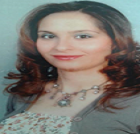
Biography:
Aylin GüneÅŸ has expertise in gynecologic and obstetric nursing. Her field of study is cancer, menopause, labor etc. She participated in various symposiums, courses and congresses in related fields. She has worked as a clinical nurse at the hospital for 12 years and has been working as a research assistant in an educational institution for 2 years. She is also PhD student and writing thesis.
Abstract:
INTRODUCTION: Health care is one of the basic human rights. The success of primary health care depends on the well-educated nurses and other health care professionals to use the changes in the health care system to improve the standardS of care of the patient. The use of simulations in nursing provides an opportunity for students to improve their self- confidence and develop clinical decision. One other aim is to be able to choose the appropriate scientific principles to be useful in solving nursing problems and to use the simulations in nursing and the studies about the results in the theses carried out within the scope of postgraduate education which is the development of new hypotheses.
OBJECTIVE: In this study, it is aimed to examine the thesis studies about the use of simulation in nursing education in Turkey.
METHOD: A national scan engine for thesis was searched using the key words of simulation, simulator, simulated patient, standart patient, simultaneously by the researcher without giving date range. A data collection form was created by researchers on how their work was studied. The data collection form included titles of the thesis work, the institution where the thesis work was conducted, the field of study in which the thesis work was carried out, type of thesis, type of study, sample group and sample size and type of intervention.
RESULTS: As a result of examination of eight article was found. 38% of the studies (3 studies) are master thesis studies and 62% (5 studies) are doctorate thesis studies. (2 studies), obstetrics and gynecology, 13% (1 study), surgical diseases nursing and 51% (5 studies) nursing fundamentals. All studies except one were conducted randomly in semi-experimental study. It was found that the studies were carried out on the first, second and third year students and the average sample size was 73 students. The first thesis work on topic was published in 2012. When the distribution of the thesis according to their subjects is examined, it is seen that the simulation method is used. in terms of blood pressure measuring skills, student knowledge and skill in postpartum hemorrhage management, critical thinking skills, obstetric skills, psychomotor skills, thorax and heart examination skills and intravenous catheterization skills and pre/post operational care skills.
CONCLUSIONS AND RECOMMENDATIONS: The results shows that the thesis studies related to simulation have the emphasis in the last decade. It is recommended that the use and results of the simulation in several nursing implementations should be conducted to provide more evidence
Nebahat Bora Güneş
Hacettepe University, Turkey
Title: The comparison of perceivied learning needs of the mothers with preterm infants before and after discharge

Biography:
Nebahat Bora GüneÅŸ was born in 1982 in Ä°stanbul. She graduated bachelory degree in nursing of Hacettepe University in 2006 and had worked for seven years in several paediatric clinics. In addition to her clinical experience, Nebahat also has an outstanding academic background that includes a Master of Science in Nursing from the Paediatric Nurse Practitioner Program of Gazi University and doing her PhD in Child Health and Sickness Nursing Program of Hacettepe University. Her scope of practice encompasses premature infants, newborn care, type 1 diabetes, patients safety and nursing care indicators, health promotion, disease prevention, diagnosis and management of common and complex health care problems beginning in childhood
Abstract:
The purpose of this study is to compare perceivied learning needs of the mothers with preterm infants when the babies are in neonatal intensive care unit and 10 days after discharge
Methods
The survey consisted of 43 care domains on which mothers feel themselves enough or not and may or may not need education during their baby's hospitalization in the NICU. For each domain, mothers were asked if they feel enough or willing to learn about prior to discharge. Mothers were given structured discharge education prepared according to the questionare during their hospitalizations. Ten days after discharge mothers were asked the same questions again in their homes.
Results
Of 80 questionnaires distributed, 74 (92.5%) were completed and analyzed. During NICU hospitalization, the highest need for learning was about the protect from ilness and safety such as vaccinacition (n=44) and follow up (n=46). The feeding ways and details about feeding such as hygiene of bottle (n=43) and preparing formula (n=43) followed the safety and maintainig health applications. In the follow up survey after the structured the leading learning needs were not existing. Instead care problems such as the care for daper dermatitis (n=46) and care in the colic (n=52) were main learning needs.
Conclusion
Asking parents directly about their learning needs and preferences may be the most reliable way for healthcare professionals to ascertain how to support and promote individual parents’ learning when sharing management of their baby’s special conditions at home. However the professionals should consider that mothers may declare the learning needs only according to their perceptions before they stand alone with the baby
Mildred E. John
University of Calabar, Nigeria
Title: Photovoice as a student-centred teaching method for graduate nursing students in Calabar, Nigeria
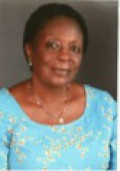
Biography:
Mildred John is a registered nurse, registered midwife, and registered nurse educator with a BSc (Nursing), PhD (Educational Administration & Planning). With over thirty years as a teacher of nurses, Mildred has acquired knowledge, skills and disposition for capacity building, team building, and curriculum development. She has 56 publications in peer reviewed journals. She has served as head of Department, Dean of Faculty and member of the board of the Nursing & Midwifery Council of Nigeria. She is the current President of the University Nursing programmes in Nigeria
Abstract:
Documentary/interactive photography (photovoice) has been used for community action research, but use in the nursing classroom is limited. When used appropriately photovoice can effectively engage students and enhance learning. The study aimed at assessing the acquisition of skills in critical thinking, communication, self-directed learning, and problem-based learning through the use of photovoice in teaching. Quasi-experimental, pre-test/post test design was used. Photovoice was used to teach a course on health systems management to 20 postgraduate students. Ethical clearance was obtained from University of Calabar Research Ethics Committee. Students were asked to take pictures that support both the positive and negative aspects of assigned topics. Pictures were combined with oral narratives to share information using power point slides. Data were collected using a validated assessment tool with 40 items. Data analysis was on SPSS 18.0 for descriptive and inferential statistics. Results showed that photovoice methodology helped students develop critical thinking skills (p = 0.01), promoted self-directed learning (p = 0.001), strengthened communication skills (p = 0.01) and ensured problem-based learning (p = 0.02). Participants reported empowerment of students for more effective involvement and participation in the teaching-learning process (100%); creation of powerful visual facts of the topics (95.0%), effective engagement of students (90.0%), enhanced appreciation of different points of view (85.0%). Challenges identified were the cost in time and finances to produce pictures that fully depict the topics. It is concluded that photovoice enhances engagement of students and increases learning, and could be an effective instructional method in nursing education
Max Bishop
Director of Clinical Simulation, USA
Title: Simulation learning tool in Nursing Education

Biography:
Dr. Bishop has a passion for assessing and enhancing critical thinking skills in nursing students. His previous academic endeavors supported the constructivists approach to student learning, but applied these theoretical underpinnings to the simulation environment. His research identified the strengths of having simulation integrated into the curriculum for improved outcomes in patient care based on the construction of critical thinking skills from novice to graduate
Abstract:
Statement of the problem: For decades, simulation has been used as a learning tool in a multitude of industries including healthcare. Human patient simulators allow varying levels of fidelity to mimic authentic patient care. The simulated clinical environment supports demonstration of procedures and ongoing construction of critical thinking. In the clinical area, it progressed to clinical reasoning. There is a shortage of clinical placement sites for teaching nursing students. The result is multiple nursing programs have had limits placed on their enrollments or have cancelled expansion plans. The shortage of clinical sites is compounded by the shortage of qualified nursing faculty. Clinical sites have decreased numbers of students permitted in each clinical group, also. Nursing administrators have found an alternative solution using simulation whereby a group of students can participate in patient care in a simulated patient care arena.
Methodology: A quantitative, quasi-experimental, cross sectional, four-group design was designed to examine the impact on using Human Patient Simulations on students’ critical thinking skills. A sample of 100 students were enrolled in one of two campuses of the same program in the U.S. using the same curriculum. One program had 25% of their clinical hours performed in a simulation lab, whereas, the other campus had the previous traditional clinical hours performed in acute care or long term care settings without simulation. All students completed the California Critical Thinking Skills Test at the beginning and end of their nursing program.
Findings and Conclusion: The results supported previous studies that demonstrated a correlation between six variables and improved critical thinking scores when simulation was integrated into a curriculum rather than using clinical sites alone for learning care of patients. The clinical education experience to gain critical thinking skills and move toward clinical reasoning was enhanced through the use of human patient simulators in a nursing lab experience
Amanda Charles
Risk Manager at Austin Health, Heidelberg, Victoria Australia
Title: Reporting deaths to the coroner-what do nurses understand about the process?

Biography:
Amanda Charles is currently employed as Risk Manager at Austin Health, Heidelberg, Victoria Australia. Her qualifications include Registered Nurse, a Certificate in Coronary Care Nursing and Accident and Emergency Nursing, Masters of Nursing (Nursing Education) and presently undertaking a Doctor of Philosophy. Prior to her employment as Risk Manager, Amanda had held a number of senior roles within emergency nursing and also coronial services, Victoria. She has presented widely on many subjects.
Abstract:
Statement of the Problem:
The value of death investigation within the health sector can be an extremely valuable tool in the provision of safe patient care. Some deaths which occur in hospital are required to be reported to the coroner’s office. These deaths undergo a review process, with the findings and /or recommendations returned to the hospital as lessons learned. This process assists in identification of factors that may have prevented the death, again enhancing ongoing care.
Methodology & Theoretical Orientation: Twenty two semi structured interviews were recorded and transcribed which includes nursing staff (N=10). The interview questions were designed to determine the clinician’s understanding of deaths that are reportable to the coroner and why this reporting is required. This study was performed in a tertiary referral hospital in Melbourne, Australia, and the health service offers a variety of acute and subacute services, across several sites.
Conclusion & Significance: : There were consistent themes identified during the analysis included a lack of awareness of which deaths meet the reportable criteria, and why those deaths are required to be reported, together with educational support and feedback .
Although the reporting of deaths to the coroner is primarily the role of the medical staff in Victoria, Australia the ability of nursing staff to be influential and informed in this area should not be underestimated. The pursuit of a safer environment for our patients within our hospital can be enhanced by the lessons from coronial investigation. For this to review to occur, these deaths must be reported

Biography:
I have been practicing as a nurse since 2008 in various acute roles and most recently as a Respiratory Clinical Nurse Specialist. I took up my position as Lecturer in Adult Nursing in only March 2016 and enjoy meeting the challenges that full time learning offers. I’m the unit lead for the Acute and Immediate Care unit for the Adult Nursing programme, although I teach across other programmes and post graduate courses if time allows.
Abstract:
Objective Structured Clinical Examinations (OSCE’s) are recognised and utilised by the Nursing and Midwifery Council (NMC) for assessing nursing skills and competency, and within Higher Education to summatively assess undergraduate Nursing students. Students report significant preparation and performance anxiety, over and above traditional assessment methods. This action research sought to answer the question; can a video OSCE demonstration improve self-confidence and reduce anxiety in students preparing for such assessments? A self-reported anonymous questionnaire was completed by 61 undergraduate student nurses in a UK university, to rate self-confidence and anxiety levels pre and post accessing a video demonstration of an OSCE assessment. Results demonstrated a statistically significant mean improvement in self-confidence, from 2.75 to 3.82 and reduction in anxiety after accessing the video intervention, 3.46 reducing to 2.72. Paired t-tests showed statistical significance t(60) = 5.66, p = < 0.001 and t(60) = 4.76, p = < 0.001 respectively. Participants free text comments suggested adding multiple video examples for future students and unanimously agreed that the video was valuable in their assessment preparation. These results suggest video examples are a useful learning and preparation tool for student candidates preparing for OSCE assessments. Further research into the value of multiple video examples and influence of this preparation on actual assessment results is suggested
Wassachol Pichianwilai
Suranaree University of Technology, Thailand
Title: The development of instructional model to enhance critical thinking abilities in pediatric and adolescent nursing practicum

Biography:
Wassachol Pichianwilai isa Lecturer at Institute of Nursing, Suranaree University of Technology. She teaches courses in Pediatric and neonatal nursing care. She had been working in Neonatal wardfor 7 yearsandused to received 3rd reward Innovation for Nursing practice in neonatal. She graduated with a Master’s degree in Nursing from Khon Kaen University, Certificate in Child health care from Lund University, Sweden, and Certificate in Neonatal critical care nurse practitioner from Mahidol University. So, that she have gained variety kinds of knowledge and experiences from Neonatal care. She brings experience in neonatal education and research, and her research expertise in Breastfeeding, Premature infant, and nursing education
Abstract:
Statement of the Problem: In nursing practicum, The teaching and learning process can’t encouraged students to become critical thinking abilities.Traditional practicum appear frequently that nursing students lack of many skills, such as don’t understand relations between the theory and the patient, lack of Holistic careand critical thinking.The researcher developed the instructional model to encourage students to have a critical thinking abilities. Instructional model are based on the constructivist theory. Constructivism underlies mind mapping as learning strategies which are promising approaches in the setting of nurseeducation. The purpose of this research was to compare the critical thinking abilities of nursing students before and after learning instruction model. Methodology&Theoretical Orientation: The samples were 30 third-year nursing students, Institute of Nursing by using single group pre-and-posttests. The data collection instruments were mind-mapping demographic records, critical thinking test, and a student satisfaction questionnaire. Data was analyzed by frequency, percentage, mean, standard deviation and t-test. Findings: The findings revealed that students’critical thinking score after learning from the instructional model was higher at a statistically significant level of .01 Conclusion & Significance: Nursing student think critically and this involves: analysis and reflection as the concept of patient-specific nursing care. Mind maps as a teaching tool have been used to encourage critical thinking by inspiring students to understand relations between the theory and patient which cover Holistic nursing care.
Jung Sun Lee
ASAN Medical Center, South Korea
Title: A study on the relationship between Warfarin related Knowledge, medication adherence, sick role behavior of cardiac valve surgery patients

Biography:
Lee Jung-sun works as an APN at the Asan Medical Center in Seoul and is responsible for the education, counseling and management of patients undergoing cardiac surgery. I am also attending the department of nursing department in Hanyang University
Abstract:
Purpose This study was conducted to investigate the relationship between Warfarin related Knowledge, medication adherence, sick role behavior of cardiac valve surgery patients. Methods : The participants were 124 patients(outpatient unite). Data were collected using a questionnaire and analyzed using t-test, ANOVA and Pearson correlation, stepwise regresstion. Result :The duration of warfarin averaged 2.6 ± 274 months, and 42.7% of participants remembered their blood coagulation value(INR)and 80.5% of patients were warfarin-educated(Individual education, group education) but 42.7% of patients had side effects. The mean score for drug- related Knowledge was 9.7points out pf a possible 13 points. medication adherence was 6.6points out pf a possible 8 points, sick role behavior was 6.6 points out pf a possible 18 points. Conclusion: Marriage, activity level(NYHA 1.2), and knowledge factors influenced sick role behavior. The result indicate that there is a need to enhance the level of drug-related Knowledge in order to increase positive behavior as part of the sick role of these patients. Sick role behavior explained factor was 25.1%. As a result, it is necessary to develop programs that can strengthen family mediation and improve heart functioning performance in warfarin-related education
Minyoung Kim
Ulsan University, South Korea
Title: Effect of the Nutritional status and short-term outcome in Orthopedic Surgery

Biography:
Minyoung Kim has completed her Ph.D. at the age of 35 years and Assistant Professor from Ulsan University School of Nursing. She is the Adult Health advanced practice nurse for 10 years. And she has published 10 papers in reputed journals
Abstract:
Malnutrition is a risk factor for postoperative complications. The purpose of this study was to determine the nutritional status and surgery outcome in orthopedic surgery patients. Methods: This study enrolled 377 patients who underwent orthopedic surgery. Patient demographics and postoperative complications were recorded. Nutritional status was assessed using Nutritional risk screening (NRS 2002)
and haematological markers of serum albumin (ALB), hemoglobin(Hb) and total protein level. Suboptimal nutrition was defined as NRS 2002 score ≥ 3, a serum ALB level of <3.5 g/dl and a Hb of <10.0 g/dl and total protein <6.0 g/dl. Patients were also followed for outcome. Results: Malnutritional risk developed in 58 patients (17.2%). Bivariate analysis identified old age, low physical activity, hip and spine surgery and high ASA score as risk factors. Worse outcomes, including increased hospital mortality, length of stay in hospital, infection, readmission and discharge at care facilities, occurred in subjects who developed malnourished patients. Conclusions: Orthopedic surgery in elderly patients was associated with a high incidence of malnourished patients. Malnourished patients were at a significantly increased risk for postoperative complication. The results of the current study regarding patient populations vulnerable to malnourished patients should be taken into account so that such patients could be identified preoperatively or in the immediate postoperative period
Annie Lau
Robert Gordon University School of Nursing and Midwifery, United Kingdom
Title: Midwifery students’ perceptions of using wikis in learning critical appraisal skills

Biography:
Dr Annie Lau attained her PhD at University of Edinburgh. Her professional background is a registered midwife and general nurse. Currently she is a midwifery lecturer at Robert Gordon University teaching Bachelor of Midwifery and supervising doctoral students. She has achieved a broad range of midwifery and nursing education experience in United Kingdom and Asia. Her research interest focus on vulnerable women and families in childbearing, health promotion and midwifery education. She developed personal mastery in clinical practice workshop at the International Confederation of Midwives Congress in 2014 and NHS Grampian to promote leadership and change adaptation within midwifery workforce
Abstract:
The standard of pre-registration midwifery education in United Kingdom requires students to achieve competency in critical appraisal of knowledge and research evidence. Students often find learning research a challenge due to lack of utilization in practice. The study was to evaluate how wikis would enhance student collaborative learning appraisal skills. Mixed methods design was used to evaluate student participation and perception of using wikis. All final year students participated four structured wiki activities followed by face to face post wikis seminars over a 5 weeks period. Online pre and post wiki questionnaires were used to evaluate their perception of using wikis and one focus group interviews were conducted to explore their learning experiences. All students (N=28) were invited to participate an online evaluation. A total of twenty (N=20) returned the pre and post wiki questionnaires with overall response rate of 70%. Eight students participated in one focus group interview. 55% reported that wiki was easy to access and 65% students were clear about wiki learning activities. 40% students were comfortable to write comments on the wiki pages. There was significant difference in the students’ perception about their level of confidence in critical appraisal skills (pre wikis: Mean=3.13, SD=1.59; post wikis Mean=6.00; SD=1.14, p<0.001). Qualitative findings indicated wiki group dynamics plays a key element in student participation. Non engagement, time pressure and preferred individual learning style posted a barrier in wikis group learning. Future research warrant to explore grading of wikis contribution and associate factors in supporting collaborative learning.
Petra Boersma
Inholland University of Applied Sciences, Netherlands, Amsterdam
Title: Testing the implementation of the Veder contact method, a theatre-based communication method in dementia care
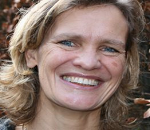
Biography:
Petra is a nurse and lecturer at Inholland University of Applied Sciences, department of Nursing in Amsterdam. Currently, she is finishing her PhD at the VU University Medical Center, department of Psychiatry. In her thesis she focuses on the implementation of a theater intervention in daily care for people with dementia. She has published four papers (three related to this thesis) in reputable nursing and psychogeriatric journals
Abstract:
Statement of the problem: People with dementia in nursing homes benefit from person-centred care methods. Studies examining the effect of these methods often fail to report about the implementation of these methods. A recently developed person-centered care method is the Veder contact method (VCM). With theatrical tools VCM stimulates the communication between caregivers and residents. Our study aims to describe and test the implementation of VCM in daily nursing home care.
Methodology and theoretical orientation: Caregivers (n=136) and residents (n=141) participated in a one-year quasi-experimental study. Foundation Theater Veder implemented VCM in six experimental wards and rated quality level of implementation. Six control wards delivered care-as-usual. Before and after implementation, caregivers’ behaviour was assessed during observations using the Veder-observation list and Quality of Caregivers’ Behaviour. Their attitude towards residents was rated with the Approaches to Dementia Questionnaire. Quality of life, behaviour and mood of the residents were measured with QUALIDEM, INTERACT and FACE. Their Care Plans were assessed on person-centered background information.
Findings: Significant improvements in caregivers’ communicative behaviour (i.e. the ability to apply VCM effectively and establishing positive interactions) and some aspects of the behaviour and quality of life (positive affect , social relations) of the residents were found in favour of the experimental wards with a high implementation score, as compared to the experimental wards with a low implementation score and the control wards. No significant differences between the groups were found in caregivers’ attitudes towards dementia, the residents’ Care Plans and mood.
Conclusion and significance: The positive changes in caregivers’ behaviour and wellbeing of the residents in the experimental wards with a high implementation score partly confirm the successfulness of the implementation of VCM. Distinguishing wards with a high and low implementation score provided insight in factors which are crucial for successful implementation.
Tova Kerschen
School of Nursing, Bnei Zion, Haifa, Israel
Title: Toolkit: Preliminary Guidelines for Successful Clinical Placement in Women's Health Departments

Biography:
Tova Kerschen is a nurse educator in the Bnei Zion Nursing School in Haifa, Israel. She is coordinator of the women's health program, teaching classes as well as working with the students in the various women's health clinical placements. Mrs. Kerschen had a joint appointment as the women's health coordinator in the Jerusalem's Sharie Zedek Nursing School as well as being a staff nurse in the maternity and gynecological departments from 1981-2008. She had presented in various conferences including NETNIP 2014, RCN conference for nurse educators, 2013
Abstract:
Although nursing education has changed through the years, the clinical field will always be an integral and important part of nursing education. Clinical placement essentially is the bridge between theory and practice. It is the environment where the student nurse integrates theory with nursing practice.
As nurse educators it is our duty to provide an optimal clinical experience to promote thoughtful learning, critical thinking, intelligent reflection, effective methods of working with staff, with emphasis placed on person -centered care.
In this paper I will address fundamental topics that form the building blocks of a clinical placement. I will address the following questions: 1. Does placement always have to be in the clinic? 2. How do we deal with clinical placement of male student nurses in obstetrics and gynecological units? 3. What is the nature of pre and post clinical conferences? 4. How do we apply and integrate the nursing process within the clinical setting? 5. What are forms of instructor evaluation of students' performance in the clinical setting?
Promoting a global-universal method of crucial thinking is of primary importance in todays' world. Multi-cultural orientation is part of the student nurse's education. In this respect I will conclude this paper by sharing selected experiences and challenges related to cultural diversity among students, staff and patients originating from Jewish, Christian and Muslim cultural backgrounds that constitute typical ethnic populations in northern Israel. Hence giving the student nurses a unique opportunity to experience cultural diversity ----multi cultural orientation
I would like to share with my colleagues the "necessary tools" that facilitate successful nursing clinical placement
Susan Gledhill
Australian Catholic University, Australia
Title: Educating nurse leaders who will drive innovation and practice improvement

Biography:
Dr Susan Gledhill is a registered nurse, registered midwife and academic. Her current position is senior lecturer and postgraduate course coordinator in the School of Nursing, Midwifery & Paramedicine at the Australian Catholic University (Brisbane Campus) where she has responsibility for postgraduate course coordination, strategic involvement in curriculum development and working in close collaboration with industry partners. Susan lectures in postgraduate units that include ‘Leadership in Health Care’ and ‘Quality and Safety in Health Care’, among others. Susan’s professional experience includes ten years of nurse management, research in the areas of healthy ageing, pain management and dementia and prostate cancer research. Susan’s professional experience also includes policy development and research with the Queensland Nursing Council and health practitioner regulation with the Australian Health Practitioner Regulation Agency (AHPRA).
Abstract:
Nurse leaders are required to inspire and lead their staff and guide them through an often challenging process of questioning, exploring possibilities, driving fresh ways of thinking, taking risks and collaborating with others, including consumers. Successful change management for practice improvement requires “a systematic approach to test new ideas and innovation … which are often based on the expectations of users of the service, as well as on prevailing socio-economic circumstances and policies” (Gopee & Galloway, 2014, p. 145).
Innovation for practice improvement is not a new phenomenon and history demonstrates the significant effect that a health practitioner can have, not only on improving practice and driving innovation, but also in demonstrating effective leadership skills (Barr & Dowding, 2016; Kelly, 2012). Contemporary challenges, and opportunities, for nurse leaders include integrated health care, regulatory factors, consumer expectations, building coalitions, workforce diversity and safety and quality improvement initiatives.
The question is therefore, what are the current challenges in educating potential nurse leaders who will model good governance, lead practice improvement and drive sustainable change? Innovative educational strategies that will be discussed include broad-based curriculum with exposure to multidisciplinary peer groups, supporting content delivery with technology, basing content on contemporary real-world situations and consolidating a ‘systems thinking’ approach to leadership
- Nursing Education
Location: Prague, Czech republic
Session Introduction
Nurten OZEN
Istinye University, Faculty of Health Science, Istanbul, Turkey
Title: Assessing the attitudes and behaviors of nursing students according to Caring Nurse-Patient Interaction scale
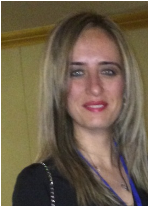
Biography:
Nurten Ozen has completed his PhD at the age of 33 years from Gulhane Military Medical Academy School of Nursing in Turkey. She is Asst. Prof. at Istinye University Faculty of Health Science in Istanbul, Turkey. She is interested in intensive care unit infections, nutrition in intensive care, hemodialysis, dialysis adequacy, vascular access in hemodialysis, evidence based practices. She has published more than 10 papers in reputed journals and has been serving as an editorial board member.
Abstract:
The aim of this study is to assess the attitudes and behaviors of nursing students in their clinical experiences in terms of nurse-patient interactions. It is a descriptive study that has been conducted in a School of Nursing from November to December 2013. A sample of 200 nursing students who have consented to participate in the study has been used. Caring Nurse –Patient Interaction scale (CNPI) and questionnaire complied formed by researchers are used as a means of data collecting. It is observed that there is a direct positive correlation between the CNPI scores and the attitudes and behaviors of nursing students. An analysis of the scores from the CNPI shows that total score for the importance is 337.63±23.18, for competency 293.41±34.99, for realism 290.85±42.11. When the scores from the CNPI converted to percentages it is observed that that among the attitudes and behaviors in clinical applications that are presented in CNPI the nursing students feel the importance level as %96, realism of application as %83 and the level of their own competence as %84. Nursing students who stay overnight at the hospital or accompany patients, and students who have clinical experiences in surgical clinics are seemed to be less susceptible to problems in their interactions with patients and they were observed to display more positive interaction skills. It is proposed that nursing programs should be improved as to provide the students with necessary skills to constructively and effectively interact with the patients.
Susan Gledhil
Australian Catholic University, Australia
Title: Educating nurse leaders who will drive innovation and practice improvement
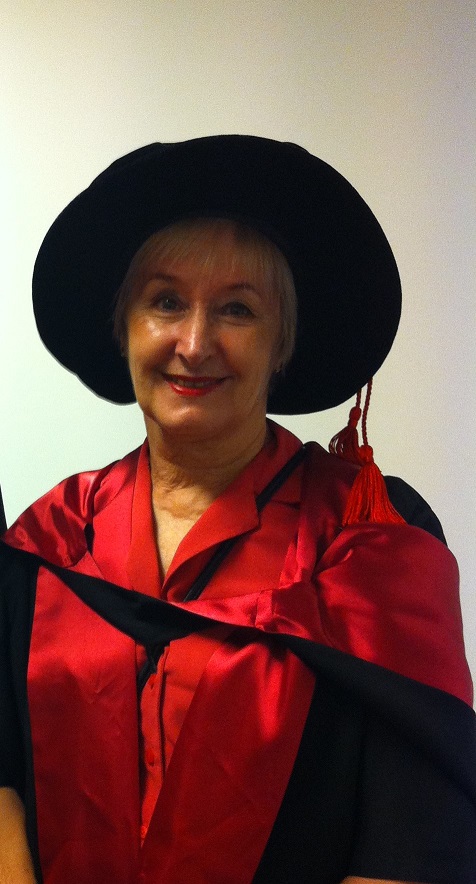
Biography:
Dr Susan Gledhill is a registered nurse, registered midwife and academic. Her current position is senior lecturer and postgraduate course coordinator in the School of Nursing, Midwifery & Paramedicine at the Australian Catholic University (Brisbane Campus) where she has responsibility for postgraduate course coordination, strategic involvement in curriculum development and working in close collaboration with industry partners. Susan lectures in postgraduate units that include ‘Leadership in Health Care’ and ‘Quality and Safety in Health Care’, among others.
Susan’s professional experience includes ten years of nurse management, research in the areas of healthy ageing, pain management and dementia and prostate cancer research. Susan’s professional experience also includes policy development and research with the Queensland Nursing Council and health practitioner regulation with the Australian Health Practitioner Regulation Agency (AHPRA).
Abstract:
Nurse leaders are required to inspire and lead their staff and guide them through an often challenging process of questioning, exploring possibilities, driving fresh ways of thinking, taking risks and collaborating with others, including consumers. Successful change management for practice improvement requires “a systematic approach to test new ideas and innovation … which are often based on the expectations of users of the service, as well as on prevailing socio-economic circumstances and policies” (Gopee & Galloway, 2014, p. 145).
Innovation for practice improvement is not a new phenomenon and history demonstrates the significant effect that a health practitioner can have, not only on improving practice and driving innovation, but also in demonstrating effective leadership skills (Barr & Dowding, 2016; Kelly, 2012). Contemporary challenges, and opportunities, for nurse leaders include integrated health care, regulatory factors, consumer expectations, building coalitions, workforce diversity and safety and quality improvement initiatives.
The question is therefore, what are the current challenges in educating potential nurse leaders who will model good governance, lead practice improvement and drive sustainable change? Innovative educational strategies that will be discussed include broad-based curriculum with exposure to multidisciplinary peer groups, supporting content delivery with technology, basing content on contemporary real-world situations and consolidating a ‘systems thinking’ approach to leadership.
Mohammed Alkatan,
Department of Physical Education & Sports, College of Basic Education Public Authority for Applied Education & Training, Kuwait.
Title: Daily Protein Intake With and Without Protein Supplementation in Kuwaiti Male Bodybuilders
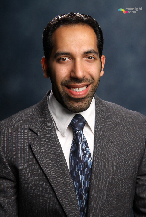
Biography:
Mohammed Alkatan has completed his PhD at the age of 32 years from the University of Texas at Austin. He is an assistant professors at Public Authority for Applied Education & Training- Department of Physical Education & Sports. He has published more than 10 papers in reputed journals
Abstract:
Introduction: Resistance training is becoming increasing popular in the Middle East, especially in Kuwait. Adequate protein intake is essential to achieve a positive net muscle protein balance and increase skeletal muscle protein synthesis. In addition to using protein supplements such as whey and casein protein, bodybuilders consume more protein in their diet than is necessary to meet training-dependent protein requirements. Thus, the purpose of the present study was to determine the daily protein intake of Kuwaiti male, collegiate recreational bodybuilders and discern the type and timing of supplementary protein intake. Methods: Nineteen Kuwaiti male, collegiate recreational bodybuilders volunteered for the study. All subjects completed a 24-hour dietary recall to estimate total daily protein with and without protein supplement consumption. Results: Using protein supplements increases daily protein consumption (148.6 g/day) compared with protein from food sources alone (118.6 g/day). The preferred protein supplements were whey protein, used by 84.2% of the subjects, and casein protein, used by 15.8%. In regards to the timing of post-exercise protein supplement consumption, of the 19 subjects studied, 10 (53%) supplemented 1 hour after training, 6 (31%) supplemented 2 hours after training, and 3 (16%) supplemented >2 hours after training. Conclusion: Kuwaiti male, collegiate recreational bodybuilders’ combined protein intake from food sources and protein supplements do not exceed recommended levels. Additionally, protein consumption would remain in the recommended range should bodybuilders fail to consume their daily protein supplement, suggesting that muscular hypertrophy may not be impaired.

